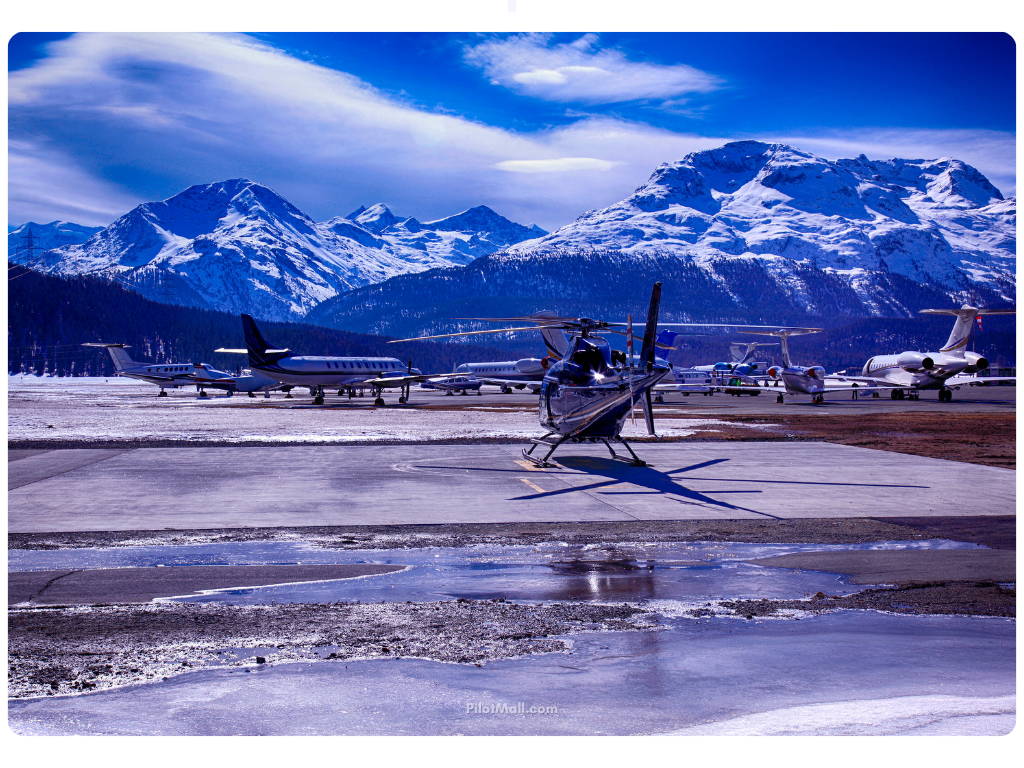 Have you ever wondered how is a helicopter different from an airplane? When you work within general aviation, the distinctions between helicopters and fixed-wing airplanes extend far beyond their obvious visual differences. While both helicopters and airplanes share the skies, they do so in very contrasting ways.
Have you ever wondered how is a helicopter different from an airplane? When you work within general aviation, the distinctions between helicopters and fixed-wing airplanes extend far beyond their obvious visual differences. While both helicopters and airplanes share the skies, they do so in very contrasting ways.
The skilled helicopter pilot operates within a region of vertical takeoff and landing, while the airplane pilot navigates through the vast expanse of horizontal flight.
These two facets of aviation represent not only a difference in vehicle design but also differing perspectives on speed, ease of flying, and range.
In this article, we will deep dive into the key distinctions between helicopters and airplanes, studying their unique characteristics and uncovering the reasons why these aircraft, though sharing the same airspace, cater to different aviation needs.
Let's find out how both helicopters and airplanes fly and what their differences are!
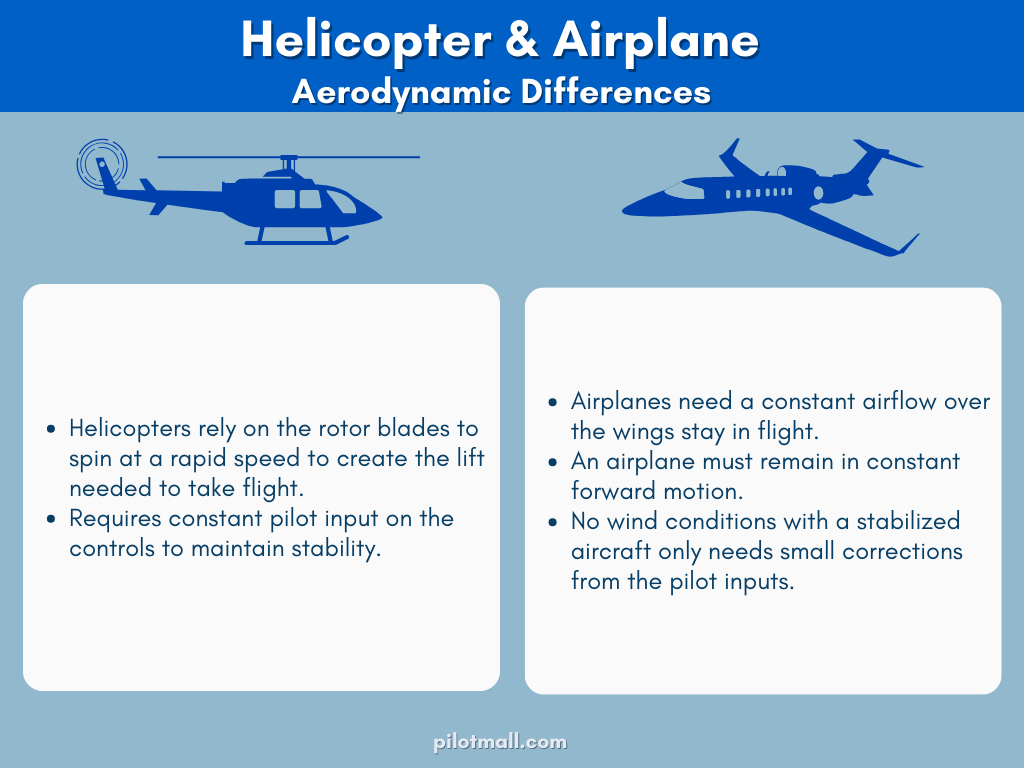 How Helicopters and Airplanes Work
How Helicopters and Airplanes Work
While the two are both capable of flight, how they accomplish this task is where their differences show. Fixed wings generate lift with their wings and wind continuously creating a constant airflow over them.
Helicopters rely on the rotor blades to soon at a rapid speed to create the lift needed to take flight. Airplanes require moving air and maintaining a constant forward motion, while helicopters are able to fly in place. Another advantage is that helicopters are faster when a task requires low altitudes and short distances.
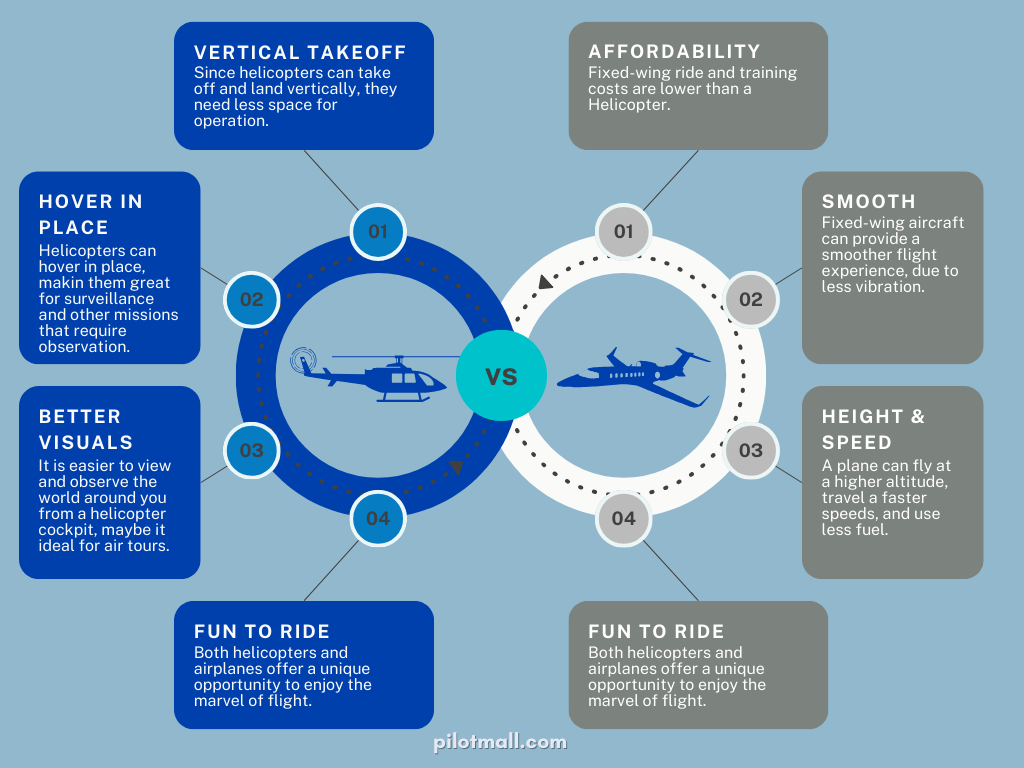 Differences in Rules
Differences in Rules
One of the key differences between these two aircraft is that helicopter charters have fewer regulations than commercial jets and airliners.
Whereas airplanes must remain above a set height while in flight, unless they are hovering over open water or descending to land, helicopters have more maneuverability and therefore the ability to stay at a lower altitude.
This allows helicopters to get closer to landmarks than airplanes typically can.
Differences in Use Cases
Both aircraft have different use cases based on the job that needs to be performed.
Helicopters do not require a long runway in order to land, and when it comes to search and rescue missions they are best suited due to their ability to hover in place. Lifting straight up into the sky is useful for medical evacuations and several situations for military operations.
Fixed-wing aircraft are the most common in general aviation, and usually are the preferred form of travel for passengers, with many preferring the comforts of a private commercial jet or commercial airline over the bumpiness and noise of a helicopter ride.
Much like how helicopters are used for military ops, many military fighter jets are also used for their agility and ability for subsonic flight.
Helicopter vs Plane Safety Differences
The question of "Helicopter vs Plane, which is safer" is a much-discussed topic both within and outside the realm of aviation. Some people argue that airplanes are the safer option when it comes to these two forms of transportation.
Regarding the safety of helicopters versus airplanes, The Federal Aviation Administration's Administrator Stephen M. Dickson said during a speech posted on January 28th, 2020:
"—U.S. Helicopter Safety Team’s latest numbers that the helicopter sector has a fatal accident rate of approximately 0.63 per 100,000 hours, based on a five-year moving average. That’s well below the overall general aviation rate of approximately 0.94—"
Helicopter charters come with a higher risk than private jets and commercial airliners, and they're subject to fewer safety regulations.
Still, commercial jetliners have a remarkable fatality rate of one death per 2.7 million flights, making them some of the safest forms of transport available.
The Federal Aviation Administration (FAA) works to reduce accidents by enforcing strict rules on pilot training and aircraft maintenance.
In the U.S., both airplanes and helicopters are considered safe so long as the pilots stay within their training and the machines are well-maintained. Both airplane and helicopter safety are a primary focus for the FAA.
Comfort Differences
There are, however, some little differences that need to be considered as far as personal comfort such as:
-
Motion Sickness: If you often find yourself feeling motion sick, then airplanes will provide a smoother experience than helicopters.
-
Noise: Helicopters are noisier than airplanes tend to be due to their rotor blades.
-
Air Travel Comfort: Depending on the size of the airplane, they can provide more space and physical comfort for air travel.
-
Flight Controls: Helicopters require constant pilot control, whereas airplanes require less control on the yoke or rudder paddles during stable flight.
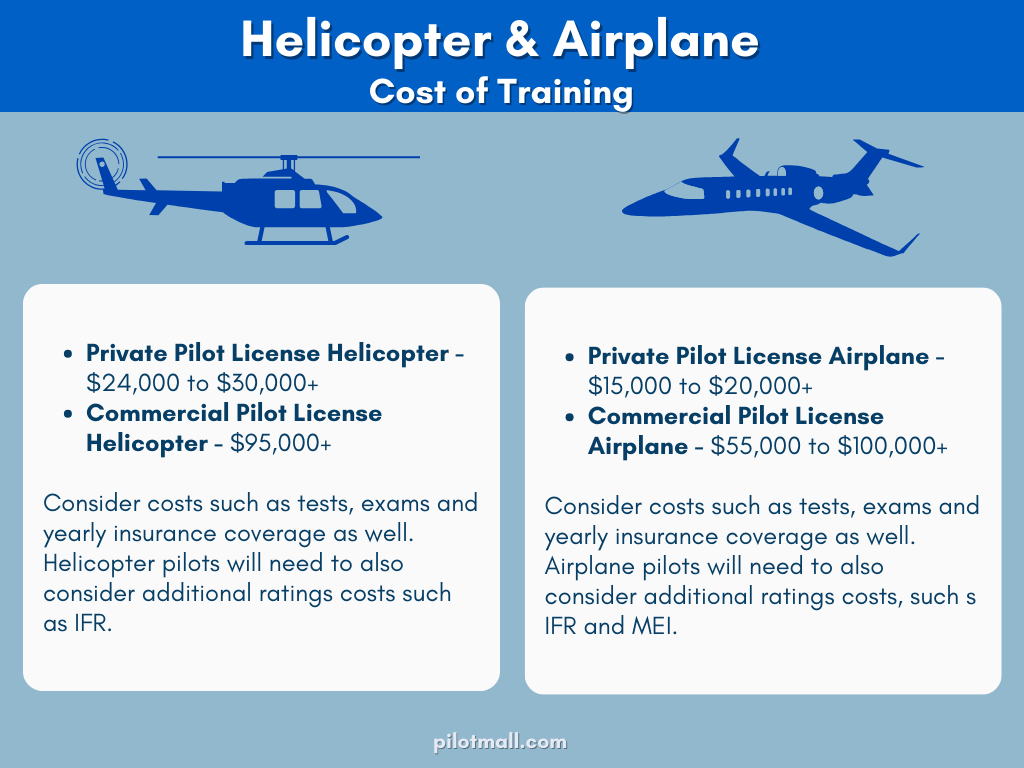 Cost of Training Differences
Cost of Training Differences
Another one of the major differences between helicopters and airplanes is the cost of training. Helicopter pilots can expect to pay more for flight training on an hourly basis than an airplane pilot would.
However, an airplane pilot may end up spending more in the long run if they go further into their career by achieving additional certifications and hours of experience.
We'll help you get a general idea of the costs for training, but know these amounts will vary based on where you decide to go for your training, and the rates for the aircraft during that time.
Here are some cost breakdowns:
-
Private Pilot License - Helicopter: $24,000 to $30,000+
-
Private Pilot License - Airplane: $15,000 to $20,000+
-
Commercial Pilot License - Helicopter: $95,000+
-
Commercial Pilot License - Airplane: $55,000 to $100,000+
-
Factor in additional costs for FAA tests and exams along with additional ratings such as IFR and MEI
Training Technique Differences
Learning to fly a fixed-wing plane is much more common than learning how to pilot a helicopter. Those interested in fixed-wing aircraft will be taught by instructors specialized in that area, while helicopter students will work with rotor-wing experts.
Although several principles are the same for both types of flight, the instruction will be tailored toward each particular craft and the control inputs required to stabilize flight.
Private Charter Flights Cost
Helicopter charters carry on board less fuel than private jets due to regulations, but helicopters use more fuel than airplanes do.
This affects their duration of flight seeing as they have to make fuel stops more often and spend more on operating and maintenance costs.
Ease of Flying
Those interested in flying ask if it's easier to fly a plane or a helicopter.
Airplane flying is challenging in the beginning and end stages, but becomes relatively easy during the cruise phase, when autopilot takes over. Pilots use this time for paperwork and reviewing airport procedures.
Flying helicopters is much more taxing because you must stay alert from start to finish. The reward, however, is the constant control manipulation—which can be quite fun to fly.
 License Requirement Differences
License Requirement Differences
The flight time required for a helicopter license is different from that on a single-engine airplane.
This list does not include the breakdown of all the required types of hours.
-
PPL Helicopter: 40 hours minimum flight time, which must include 30 hours of flight instruction and 10 hours of Solo flight time.
-
PPL Airplane: 40 hours minimum flight time, which must include 30 hours of flight instruction and 10 hours of Solo flight time.
-
CPL Helicopter: 150 hours of flight time, 100 hours of which must be in powered aircraft, and 50 must be in helicopters.
-
CPL Airplane: 250 hours of flight time, 100 hours of which must be in powered aircraft, and 50 must be in airplanes.
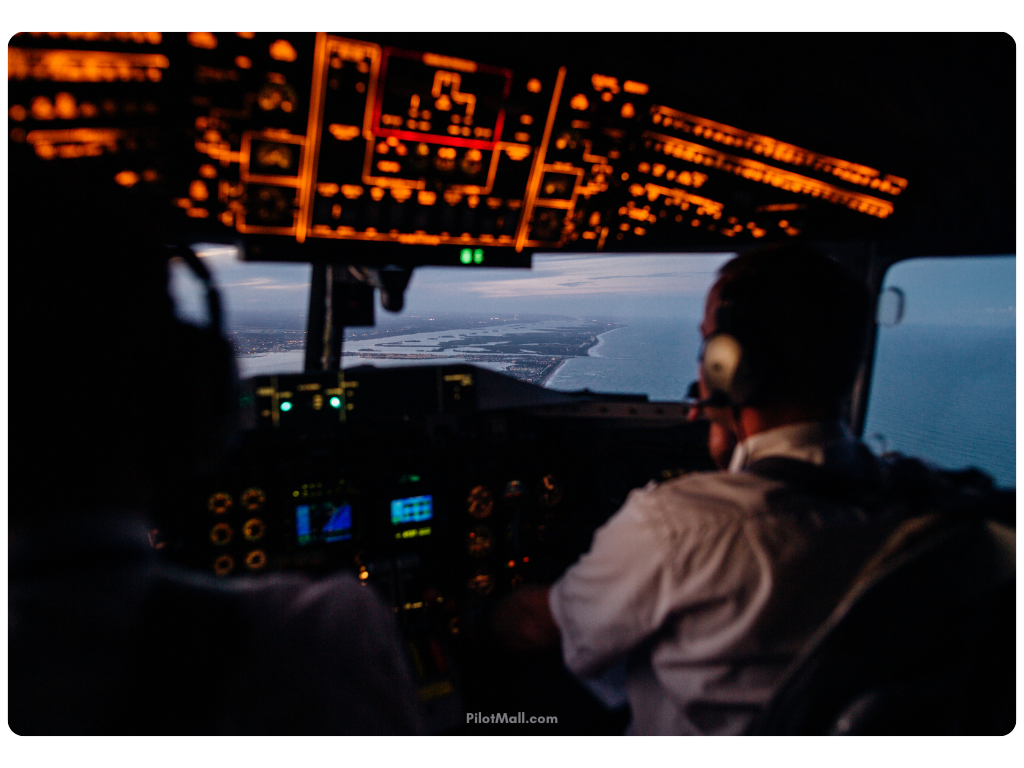 Job Demand for Pilots
Job Demand for Pilots
Currently, the job demand for pilots is still high, with more job availability in the fixed-wing sector than in helicopter charters, but even so, both are in demand.
Helicopter Pilot Jobs:
-
Helicopter Tour Pilot
-
Search and Rescue Mission Pilot
-
Helicopter Test Pilot
-
Military Pilot
-
Flight Instructor (Helicopter)
-
Helicopter Private Charter Pilot
-
Air Ambulance Pilot
-
Law Enforcement Pilot
-
Border Patrol Pilot
Airplane Pilot Jobs:
-
Airplane Tour Pilot
-
Airplane Test Pilot
-
Fighter Jet Pilot
- Military Pilot
-
Flight Instructor (Airplane)
-
Private Charter Pilot
-
Airline Pilot
-
Cargo Pilot
-
Border Patrol Pilot
To see a full list of airplane pilot jobs check out our guide "Should I Become a Pilot? – 12 Reasons Why You Should"
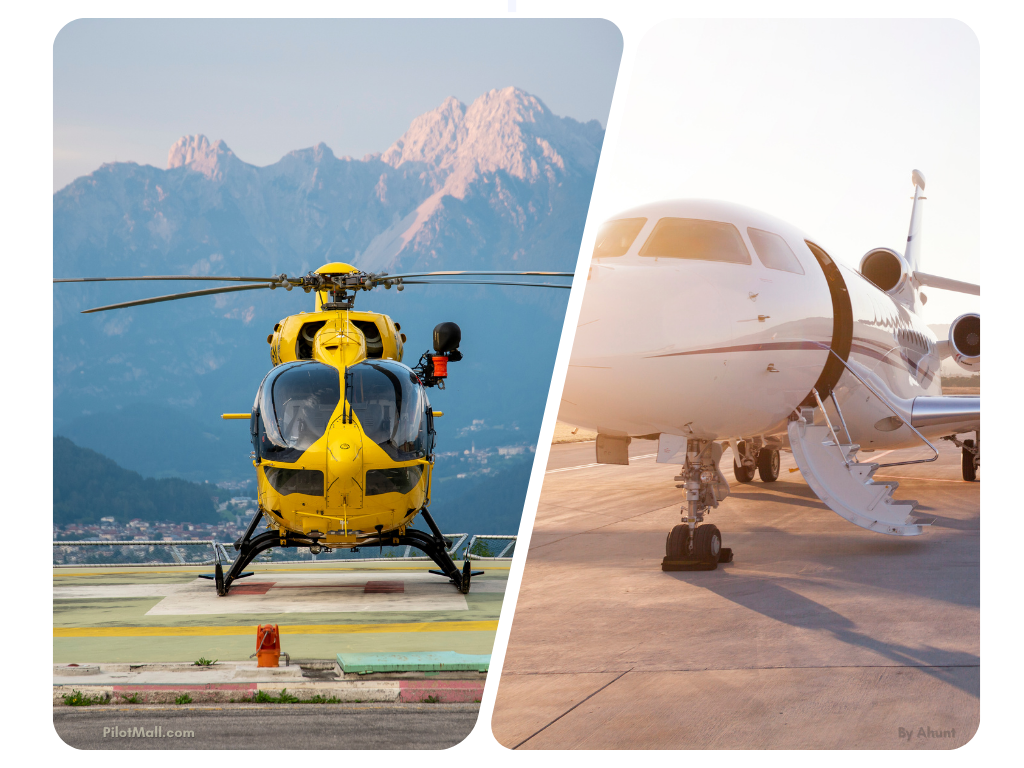 Are Helicopters or Airplanes Better?
Are Helicopters or Airplanes Better?
The choice of aircraft depends on the task at hand. For locations with no suitable runways, the benefits of helicopters shine here; they can fly in and out of tight spots that other planes can't reach.
On the other hand, when you need to travel long distances quickly, airplanes reign supreme. They are better suited for flying high above the ground at faster speeds.
It's worth noting that helicopters are more expensive to operate since they require more fuel to stay aloft and move forward than fixed wings do. Helicopters need to burn more fuel to generate lift since they are heavier, which increases their operating cost significantly.
You can check out our guide on Rotary Wing vs. Fixed-Wing to learn more about the advantages and disadvantages.
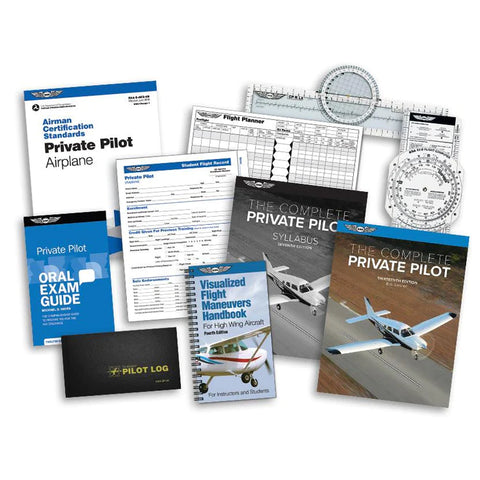
|
ASA Student Pilot KitTake the next step and get all the required books and materials. This kit includes a list of reference guides, books, plotters, and other tidbits. |
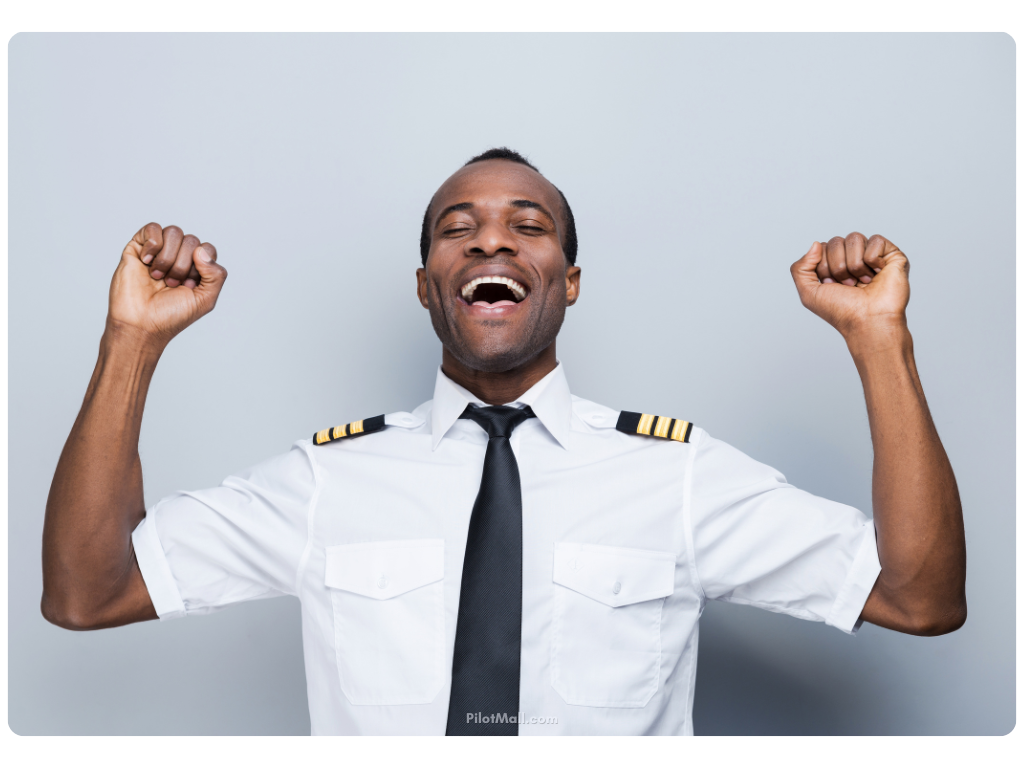 Takeaway
Takeaway
Whether you decide that your path is to become a helicopter pilot, to work for the airlines, or to fly private jets, commercial aviation is a rewarding field to be a part of.
Just like pilots have to set a flight path, we also have to chart the direction that we wish to go in life, and for some, the option may be to do both.
There are many pilots who end up learning how to fly both airplanes and helicopters, especially those who leave the military as helicopter pilots to go work for commercial airliners after earning their ATP.
If you have not flown in either a small aircraft or a helicopter, try out a discovery flight or helicopter ride and see which brings you the most joy and enthusiasm. Whichever way you decide, a life flying in the air will be one that is a labor of love.
Fly safe!
Want more information about rotor-wing and fixed-wing aircraft?
Check out these guides to learn more about what it takes to become a pilot!
Did you find this article helpful?
Do you think we missed anything important? Let us know in the comments below!

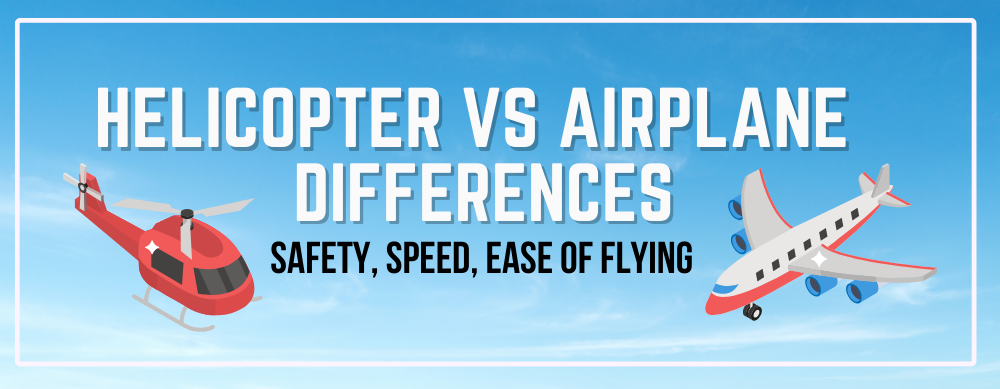


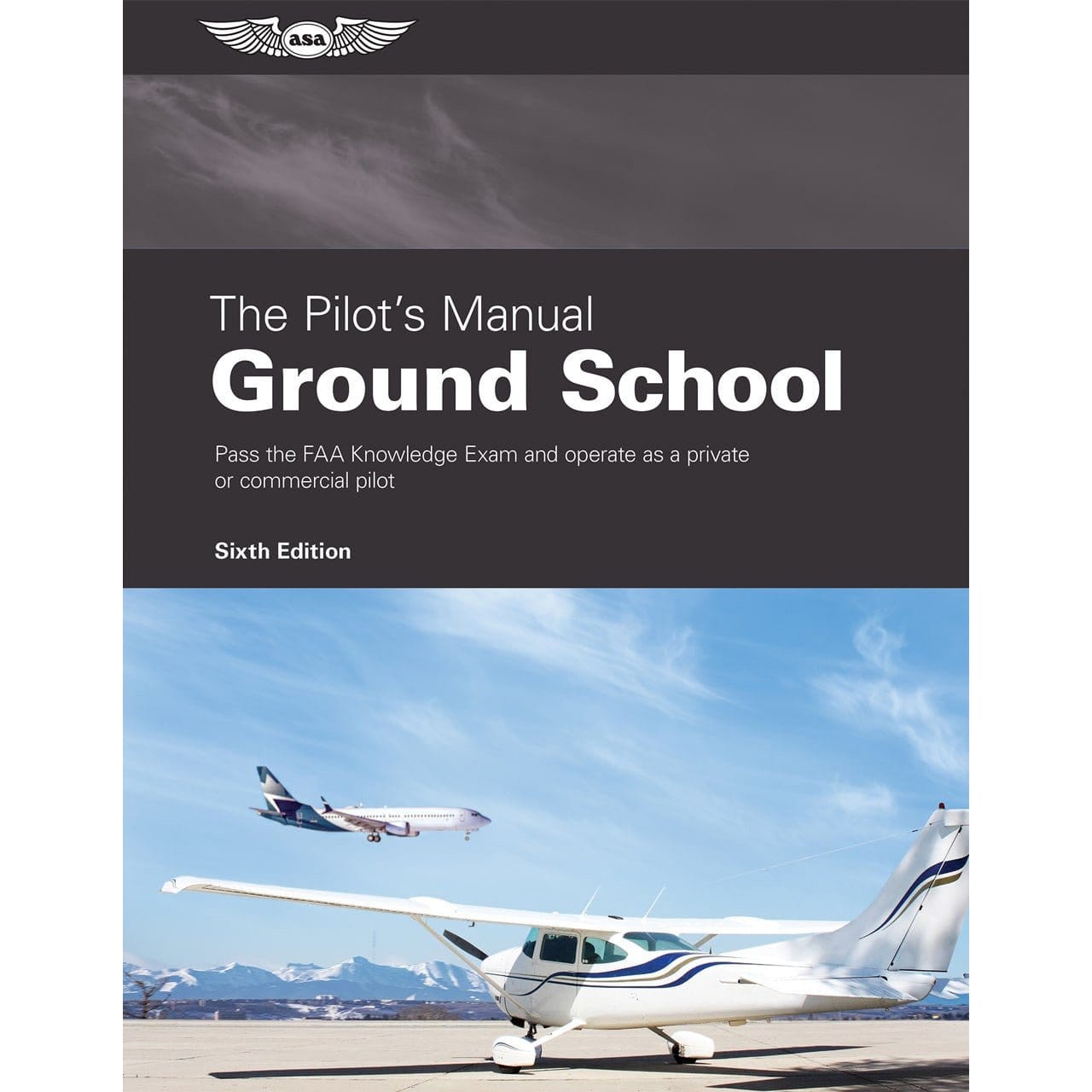
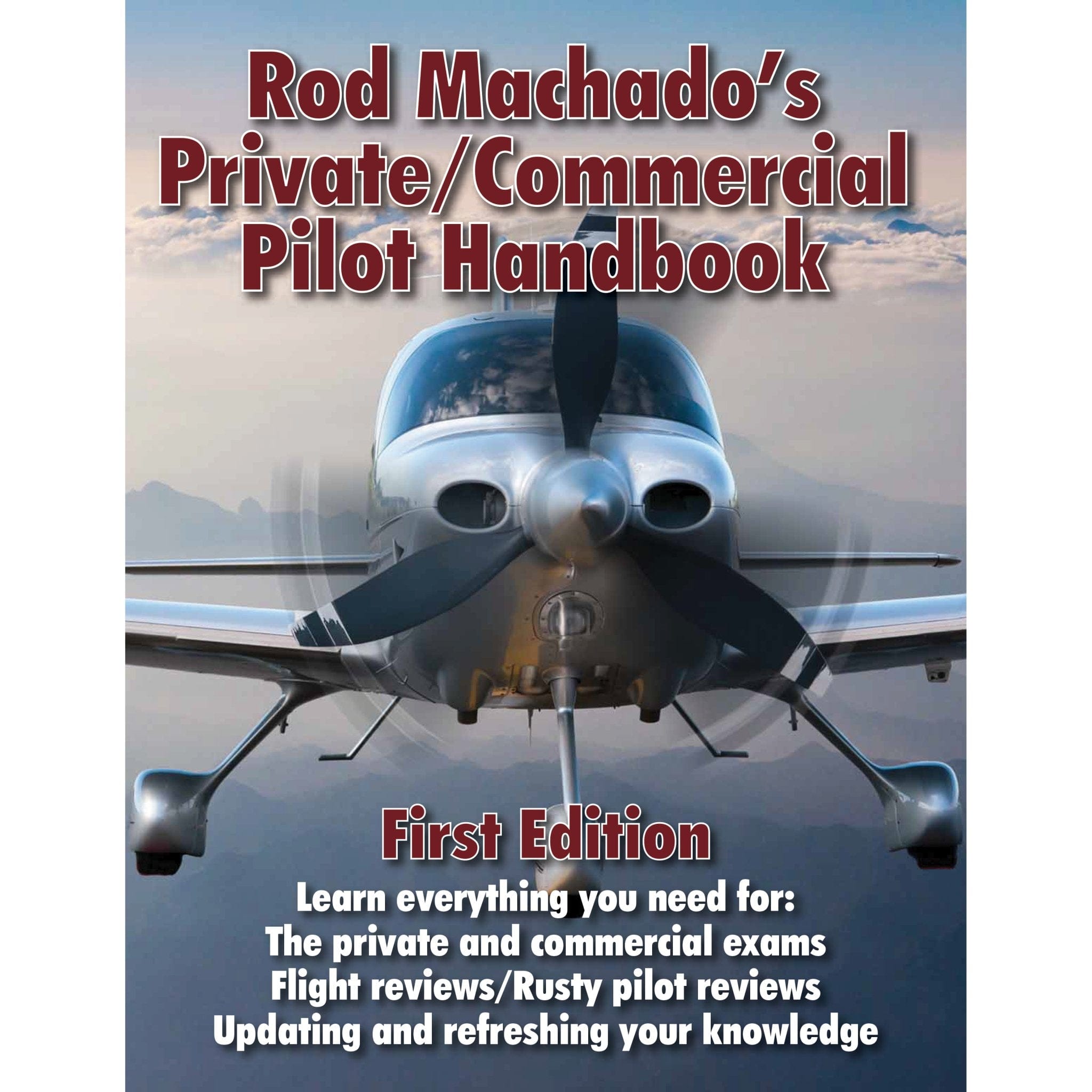



1 comment
Justin
I live about a mile out from airport inline with runway. Why do helicopter pilots seem to insist on flying low over everyone’s rooftops early mornings 1:30AM and come in for landing like an airplane. I think most people agree copters are noisey. Why can’t copters fly higher to help reduce noise and come in for landing vertically right at airport? TIA